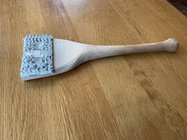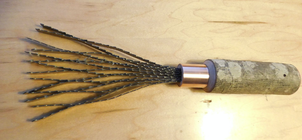I'm reading a lot about vonex as a buffing compound. I've been using the Beall system - tripoli, white diamond and carnauba wax pretty much. I do skip the white diamond on walnut because the white gets into the pores. On pens I've used GluBoost, micromesh and Novus three step polish followed by buffing with Ren. Wax.
I know vonex is used after Parfix. Can anyone speak about their experience with vonex and it's use?
I know vonex is used after Parfix. Can anyone speak about their experience with vonex and it's use?
Last edited:


